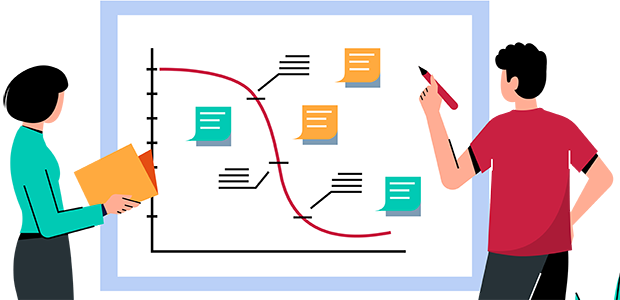
Pitch decks and business plans
Pitch decks and business plans are a very common area for discussion amongst founders and early-stage business owners, especially if those businesses are seeking to raise external funding in any way. And this is as it should be, as these two documents are essential foundation stones for both understanding and running your business, and for raising finance.
Arguably, the business plan is the more important of the two documents but, in practice, many businesses will focus more on the pitch deck, as this is what any potential investor will want to see at the outset of any discussions. But why are they so important and what is the difference between the two?
For any business owner or director to fully understand their business and how to build it and scale it, it is necessary to consider every aspect of it. This would include products and services being offered, costs, sale prices, competition – both existing and potential, systems and procedures required, staffing, production, storage, offices, supply chains, IT, and so much more. Even in the simplest of businesses there are many moving parts, and as the business grows this inevitably gets ever more complex. Without understanding all these different elements, it is almost inevitable that the business will fail.
The best way to start the thought process is to use a business model canvass (BMC) as this provides the basic structure and enables you to methodically consider every angle. Once this has been completed it can be developed into a full business plan. How big or detailed the plan needs to be will depend upon its intended use but, at the very least, a simple plan should be developed for internal guidance and use.
A business plan is usually a word type document but with detailed past financials and forecasts attached. If appropriate, some appendices can be attached detailing more specific technical or other issues of products and the like. Once produced, the business plan should be reviewed at least quarterly as your competition and the market, supply chains, product development, and most other aspects covered in it are constantly changing. This formal process helps to ensure that you are not caught out by any unexpected developments.
In comparison to a business plan, a pitch deck is a much shorter and simpler document that is normally produced in something like PowerPoint or Canva. If a potential investor, or indeed anybody else that may be interested in your business, wants a brief description of your activities and who is involved then this is what they will expect to see. It should typically be between 12 to 18 pages long and needs to grab the reader’s attention so it should be visually appealing with graphs and pictures and should not be too ‘wordy’.
The best way to think of a pitch deck is that it should be considered as a trailer for an upcoming blockbuster movie. Its sole purpose is to make the reader interested in you and your business and want to know more.
Statistically, a VC will spend three seconds per slide when looking at a deck, so use bullet points and be brief; do not use long paragraphs with too much information. That way, the reader might just read it properly rather than not bothering to read it at all. You will only normally get one chance so the pitch deck must be well structured and well presented.
The pitch deck should include the problem, the solution, why yours is the best solution, the size of the market, the management team and advisory board, headline financials and forecasts, how much is being raised and what the funds are to be spent on (if that is the purpose of the deck), and contact information. In many ways it is small and very easy to digest business plan. More on this can be found at BOOM & Partners and other places.
The moral of this particular story is that if your business does not have a business plan and a pitch deck then not only will you not be able to raise external funding in any form should you wish to, but you are also risking the failure of your business.

